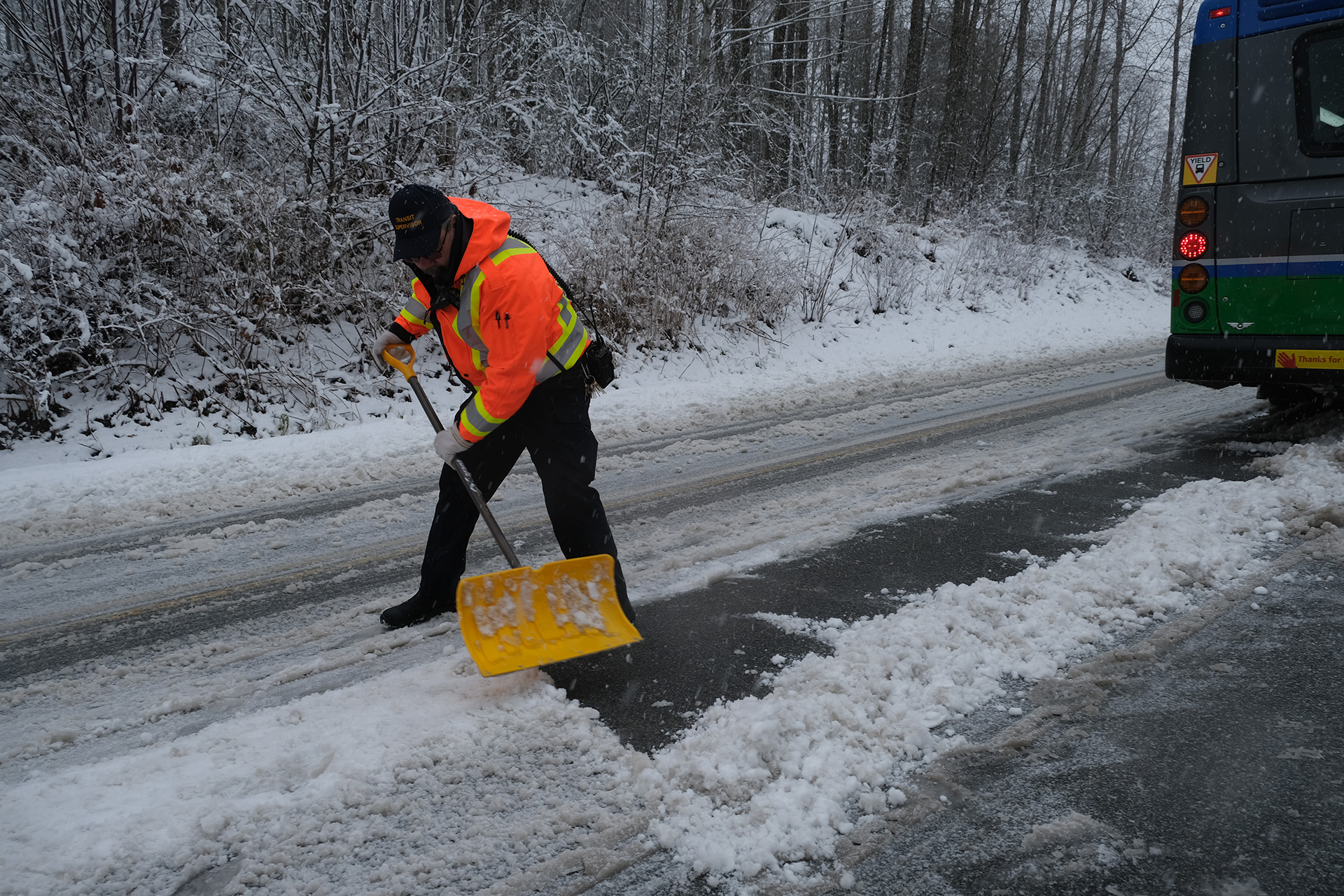Your questions answered about snowy weather preparations
Your questions answered about snowy weather preparations

Today is an extreme travel day and our transit system hasn’t escaped the impact of the snow.
We’re receiving a high volume of enquiries about transit conditions, so we have compiled a list of frequently asked questions by you, our customers, on social media.
Don’t forget! Sign up for Transit Alerts to be notified about updates, changes, and disruptions to the transit services you take:
Q: How’s SkyTrain preparing?
A: SkyTrain Attendants are onboard all trains monitoring the tracks to improve reliability on the system by limiting emergency braking triggered by heavy snowfall. We also run trains throughout the night to keep the tracks clear and used a special train to spray de-icer on the power rails. On the Millennium Line, we’re operating four-car trains instead of the usual two-car trains to increase capacity, but that will mean longer than usual waits for customers.
Q: What’s causing the SkyTrain doors to freeze?
A: Doors are becoming stuck as snow melts and refreezes. Several cars require maintenance before they can be safely used again and are returned to the yard. There are fewer cars available for use, meaning less capacity for customers.
Q: And what about the bus network?
Where we can, we’re switching out our longer, bendy buses for regular-sized buses, which are more agile in snowy weather. A special truck’s coating the entire 300-km trolley network with de-icing liquid to prevent the trolley wires from freezing.
Q: What’s TransLink doing to keep customers informed?
A: There’s a designated “snow desk” at our Transit Communications Centre, which is like air traffic control for buses, that’s monitoring bus routes and road conditions. Our Customer Information team is sharing updates as quickly and accurately as possible to Transit Alerts and our Twitter account.
Here are the resources available to you to stay up-to-date:
- Sign up for Transit Alerts at https://alerts.translink.ca.
- Follow @TransLink on Twitter
- Get help by calling Customer Information: 604-953-3333 or use our Live Chat service via translink.ca.
As you can imagine, we’re receiving a higher than usual volumes of tweets and calls, so please be patient.
Q: When and how are you using tire socks for the buses?
A: As needed, we’re using them on buses on Burnaby Mountain and on key North Shore routes where hills and traction are an issue. Tire socks come in handy when the bus needs to move out of a bus stop or come over the hills. Being highly specialized tools, installing them requires staff at either end of the route. Staff also need a large, safe place to install them, as well as checks and maintenance every couple of kilometers. These requirements constrain when and how snow socks can be used.
Q: Do buses use snow tires?
A: Our buses use snow-rated, all-weather tires that was recommended by our tire manufacturer. These tires provide the best traction possible in the sort of conditions we typically see during winter – wet snow. They carry a 3PMSF rating, which goes above and beyond the M+S rating that’s more common.
Q: Why are buses getting stuck when it snows?
A: While we closely with the provincial government and municipalities to ensure bus routes are plowed, this doesn’t always happen right away. Our bus service can only be reliable if roads are adequately plowed, salted and sanded.
Our Snow Desk keeps in contact with municipalities and we work together to ensure roads are cleared as quickly as possible. Transit Supervisors are also out assisting buses with shovels, sand and salt.
Q: So, why not snow tires?
A: Our buses use the best tires for our local conditions. It is not likely snow tires would improve bus performance in the type of snow we typically see in Metro Vancouver.
We’d like to thank our customers for your patience while we’ve been trying our best to get you where you are going.
Have a question that we didn’t cover? Ask in the comments and we’ll do our best to get you the answers.






Last Sunday night, January 12, 2020 I was at Burnaby hospital bus stop and waited quite long , no bus showed up. Then I walled to Willingdon avenue but no bus ther too for quite long. Ther was no update on online. Ther was no information whether bus service was available or not. I am sorry to say it did not appear to be Canada. It appeared that translink did not prepare for the snow storm at all. Such a bad experience.
It would have been better to show that Bc is Canada. No body was willing to give ride. No taxi was available
Speaking as a mechanical engineer with research background: What if you did a pilot test of putting snow tires on one or two buses on the route going to SFU? The cost wouldn’t be more than a few thousand dollars. That would let you compare the difference between snow socks and regular tires and snow tires. All weather tires are a compromise between all-season tires and snow tires. If you don’t try you won’t ever know for sure. If you want to try more, you could compare the performance of a 40 ft bus vs a 60 ft bus with snow tires and snow socks
Our “snow desk” at the Transit Communications Centre, which acts as the bus equivalent of air traffic control, keeps an eye on the roads and bus routes. As fast and precisely as they can, phrazle our Customer Information team is posting information to Transit Alerts and our Twitter account.